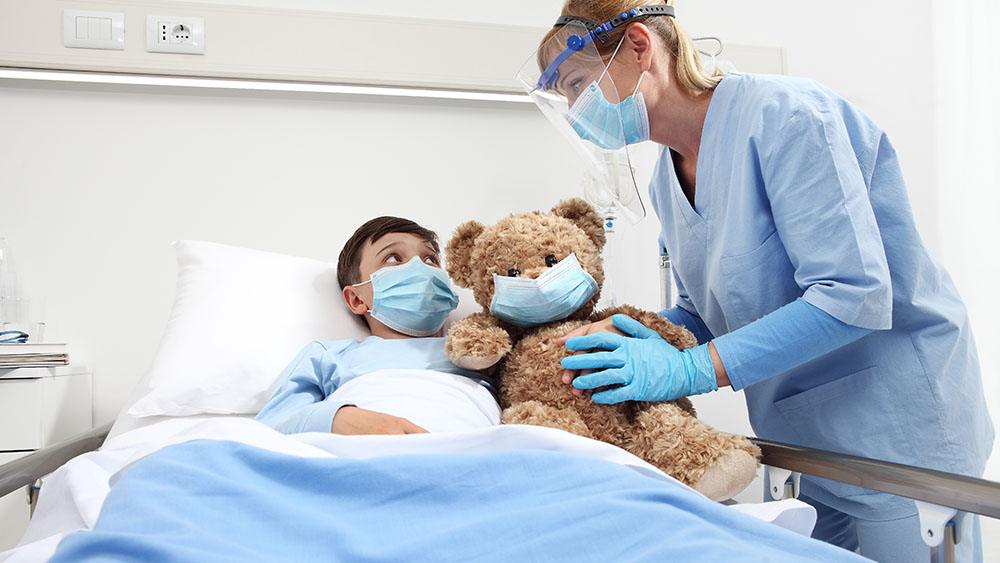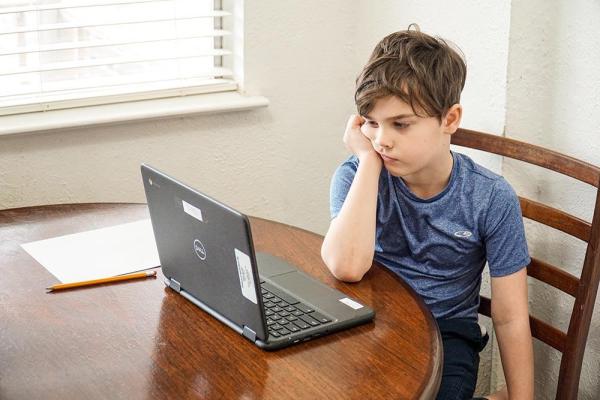Research Helps Guide Families Safely Through Pandemic
IRP’s Diana Bianchi Honored for Leading Pediatric COVID Response

Dr. Diana W. Bianchi was named a finalist this year for the Samuel J. Heyman Service to America Medal for COVID-19 Response.
When the first reports of COVID-19 came out, infectious disease experts and healthcare providers thought children might be spared its most dire effects. After all, the news reports and health statistics showed that nearly all serious cases occurred in the elderly, people with certain pre-existing conditions, and those who spent their days and nights caring for COVID patients. However, as case counts rose and disruptions in daily life grew, the medical and psychological effects of COVID on children became apparent — and the impact was alarming. It soon became clear that something had to be done to understand the disease's effects on infants, children, and teens, as well as pregnant women and traditionally underserved communities.
It was, appropriately, Mother’s Day when then-NIH Director Francis Collins sought help from Diana W. Bianchi, M.D., Director of the Eunice Kennedy Shriver National Institute of Child Health and Human Development (NICHD) and a senior investigator in the National Human Genome Research Institute (NHGRI). An expert in infant health and genetic conditions like Down syndrome, Dr. Bianchi was just the person to initiate large-scale studies across the country to assess the severity of COVID in specific populations, the safety and efficacy of vaccination and treatment, and the impact of mitigation efforts such as masking. For this critical leadership, Dr. Bianchi was named a finalist for the 2022 Samuel J. Heyman Service to America Medal for COVID-19 Response.
“This really should be a team award,” Dr. Bianchi says. “I think it’s really an honor for all of the people who are dedicated to protecting children, people of reproductive age, and people with intellectual and physical disabilities. We all had to work together to make a difference in COVID.”
The first signs that COVID-19 was more dangerous to kids than originally thought came via reports from Europe of a rare but terrifying condition called multi-system inflammatory syndrome in children (MIS-C), which causes fever, rash, and severe swelling in organs, especially in the heart and blood vessels. Soon afterwards, affected children started appearing in emergency departments in the U.S.
“It was happening in children who had previously had COVID, some with mild cases, but now they were getting critically ill,” Dr. Bianchi says. “One minute they were perfectly fine, playing on the baseball field, and then suddenly they would collapse.”

Although researchers initially believed that kids could just shrug off a COVID infection, it soon became clear that the disease could make kids ill enough to require hospitalization.
Because the syndrome had significant effects on patients’ hearts and blood pressure, NICHD partnered with the National Heart, Lung, and Blood Institute (NHLBI) and the National Institute of Allergy and Infectious Disease (NIAID) to begin a kid-focused initiative called CARING for Children with COVID. This study focused on fundamental questions, including why some children were more likely to be infected than others, what their symptoms were, and which factors influenced the risk of severe illness and MIS-C. In addition, given that children’s immune systems are still developing, scientists also wanted to know what the potential long-term effects of COVID might be for the kids who catch it.
As a first step, eight NIH-funded study groups around the country tested samples of biological material like blood and saliva from patients and developed mathematical algorithms to help distinguish between severe COVID and other serious diseases with similar symptoms. This effort, focused particularly on minority populations, also applied those same tools to predicting which patients were most likely to develop MIS-C.
“That project has really moved along quite well and several of the groups are already developing point-of-care diagnostics,” Dr. Bianchi says. “They have all been enormously productive and I think the project will make a difference in the long run, not only for COVID but also for other inflammatory diseases that occur in childhood.”

Switching to remote schooling led to social isolation and educational difficulties for many children and teens.
While several NICHD-supported studies attempted to answer key questions related to COVID, Dr. Bianchi and colleagues across NIH were also tackling the extraordinary disruptions to kids’ lives that occurred as the world shut down to prevent the disease’s spread. While schools were closed, students suffered educational setbacks, social separation, and mental health issues. Families suffered economically, especially those who couldn’t return to work while their children were still at home. Meanwhile, kids living in poverty or who had special needs lost their most important safety net. They were losing out on school lunches and important services like speech and occupational therapy. Moreover, there was no one checking after their welfare, so those in abusive or neglectful homes were further endangered.
“The health disparities the pandemic exposed in adults were even more pronounced in children,” Dr. Bianchi says. “It was a much broader societal issue.”
Dr. Bianchi helped create the Return to School Program to address those societal concerns. One study, conducted in North Carolina and funded under the NIH-wide initiative known as Rapid Acceleration of Diagnostics in Underserved Populations (RADx-UP), showed that COVID transmission was actually lower in schools than in the communit as long as children wore masks, washed their hands frequently, and practiced social distancing.
The Return to School Program — now renamed the Safe in School Program — encouraged larger school districts with many students from underrepresented minority populations to apply the principles learned in the North Carolina study. The initiative was able to support programs in Los Angeles, Hawaii, and several indigenous American reservations. There are now projects in 13 states and the researchers and public health workers have remained involved in the communities.
“Importantly, we also have several programs that are adapting these strategies to children with intellectual disabilities who might not be able to follow instructions or who might have facial sensitivities, which make wearing a mask difficult,” Dr. Bianchi adds.

Research initiatives Dr. Bianchi has helped establish have looked into how COVID-19 infection and vaccination affect mothers and infants, with a particular focus on underserved minority populations.
Children are not the only people being helped by the research Dr. Bianchi has helped lead. NICHD tapped into several research networks they funded across the country that could quickly pivot to studying the effects of COVID and, eventually, vaccination on the health of pregnant individuals and their developing infants in the womb. The investigators were among the first to recognize that pregnant people got sicker from COVID and were more likely to need a ventilator or have serious complications, like severely elevated blood pressure, compared to non-pregnant people of the same age and background. They also discovered that unvaccinated women had a much higher risk of severe outcomes than those who received a vaccination. What’s more, additional NIH-funded research showed that vaccination in women of reproductive age had no effects on fertility and caused only a minimal, temporary increase in the interval between menstrual cycles.
Moving forward, Dr. Bianchi says the research initiative she helped establish is looking at the course of recovery from COVID in the same populations they have been studying all along, including the effects and frequency of long COVID, in which a variety of different symptoms persists long after people stop testing positive for the virus. In addition, public health workers are attempting to convince more families to vaccinate their children. While about 60 percent of teens have been vaccinated, numbers for kids in middle school and younger children remain worryingly low. Only 30 to 40 percent of tweens are vaccinated and far fewer young kids and toddlers have received the vaccine.
To meet these new goals, Dr. Bianchi will rely on the incredible teamwork and dedication she says researchers at NIH and throughout the NIH-funded research networks have shown over the past two years.
“People rolled up their sleeves and were so mission-dedicated,” she says. “Even now, they are essentially working two jobs: the COVID response and their regular jobs. I told them when I was nominated that if I could cut this award up into 150 pieces, I would.”
Subscribe to our weekly newsletter to stay up-to-date on the latest breakthroughs in the NIH Intramural Research Program.
Related Blog Posts
This page was last updated on Monday, January 29, 2024
